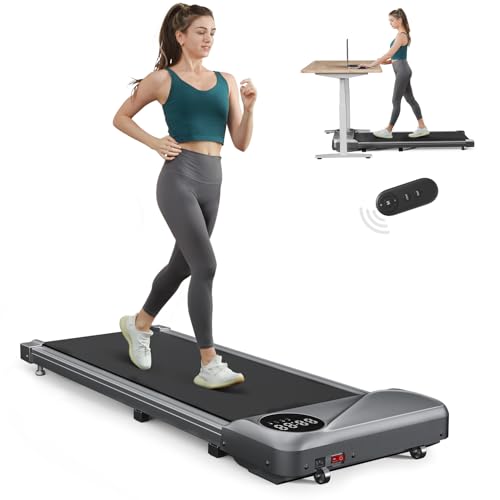The Walking Machine: A Comprehensive Guide to Your Fitness Companion
In today's fast-paced world, where time is a luxury, preserving a consistent exercise routine can be a difficulty. For numerous, a walking machine-- commonly called a treadmill-- acts as a perfect fitness companion. This article supplies an extensive look at walking machines, including their benefits, types, upkeep pointers, and frequently asked concerns.
Why Choose a Walking Machine?
Walking machines offer a useful and reliable method to incorporate cardiovascular exercise into daily life. Here are a number of crucial advantages:
- Convenience: Walking machines enable people to exercise anytime, despite weather conditions or time restrictions. They are perfect for busy schedules.
- Flexibility: Users can walk, jog, or perform at their own pace and intensity.
- Security: Walking machines present a lower threat of injury compared to outside walking or running, particularly for newbies or those recuperating from injuries.
- Tracking Progress: Many treadmills come with built-in monitors that track metrics like speed, distance, and calories burned.
Types of Walking Machines
When thinking about a walking machine, it's important to pick the ideal type based on individual fitness objectives and area restrictions. Below are the main kinds of walking machines:
| Type | Description |
|---|---|
| Manual Treadmills | These machines do not have a motor, and users require to walk or go to rotate the belt. |
| Electric Treadmills | Powered by an electric motor, permitting users to set the speed and incline effortlessly. |
| Folding Treadmills | Developed for simple storage, these treadmills can be folded when not in usage. |
| Desk Treadmills | Suitable for a dual work and workout environment, these compact machines permit walking while working. |
| Slope Trainers | These permit users to replicate uphill walking, enhancing workout strength and calorie burn. |
Choosing the Right Walking Machine
Choosing the ideal walking machine can considerably affect inspiration and efficiency. Here are some factors to think about:
Key Features to Look For
- Motor Power: An effective motor guarantees a smooth and consistent exercise. For periodic walkers, a 1.5 HP motor is normally sufficient; for much heavier use, search for 3.0 HP and above.
- Belt Size: A larger and longer belt provides more area for a comfy stride. Requirement sizes vary from 16 inches large and 50 inches long.
- Slope Options: Adjustable slope settings can replicate walking or running uphill, increasing the intensity of the workout.
- Shock Absorption: Good shock absorption reduces the danger of joint injuries and improves comfort.
- Console Features: Look for built-in exercises, heart rate monitors, and connectivity functions like Bluetooth for a more engaging experience.
Budget plan Considerations
Walking machines come in a large range of prices, depending upon functions and building and construction quality. Here's a rough budget plan breakdown:
| Price Range | Functions |
|---|---|
| Under ₤ 300 | Fundamental handbook or small electric treadmills with limited features. |
| ₤ 300 - ₤ 700 | Advanced electric treadmills with incline, medium power motors, and better warranties. |
| ₤ 700 - ₤ 1500 | High-quality electric treadmills with larger integrated displays, comprehensive functions, and service warranties. |
| ₤ 1500 and above | High-end models providing innovative technology, features, and resilient building and construction for major fitness enthusiasts. |
Upkeep Tips for Your Walking Machine
To make sure longevity and optimum efficiency of a walking machine, think about the following maintenance ideas:
- Regular Cleaning: Dust and sweat can accumulate on the machine and the belt. Wipe down florentinocourtway.top and clean the belt regularly.
- Lubrication: Depending on the design, lubing the running belt periodically can prevent wear and tear. Inspect the producer standards for suggested lubrication schedules.
- Inspection: Periodically inspect the machine for loose screws or used parts. Tighten and change as required.
- Calibration: Occasionally, check the calibration of your machine's metrics to ensure they supply accurate data.
- Proper Use: Follow the maker's recommendations for weight limitations and operational guidelines.
Frequently Asked Questions About Walking Machines
1. Are walking machines an excellent exercise?
Yes, walking machines supply an exceptional cardiovascular exercise, can assist with weight-loss, and improve general health.
2. How frequently should I use a walking machine?
Go for at least 150 minutes of moderate-intensity aerobic activity per week, which can quickly be attained with routine sessions on a walking machine.
3. Can I drop weight on a walking machine?
Yes, integrating a walking machine regimen into a healthy diet can promote weight loss, specifically if combined with intervals and incline training.
4. Is it safe for elders to utilize a walking machine?
Yes, walking machines can be safe for seniors with low-impact settings and security features like handrails. However, individuals ought to seek advice from their healthcare company before beginning any exercise program.
5. What's the distinction between a treadmill and a walking machine?
The term "walking machine" generally refers to a treadmill intended for walking, while "treadmill" can describe machines used for different intensities, including running.
With their versatility and convenience, walking machines can considerably enhance one's physical fitness journey. By thoroughly picking the best type, making sure correct maintenance, and including different workout methods, users can maximize their walking machine's advantages. Similar to any workout program, consistency is crucial to achieving long lasting physical fitness outcomes.

